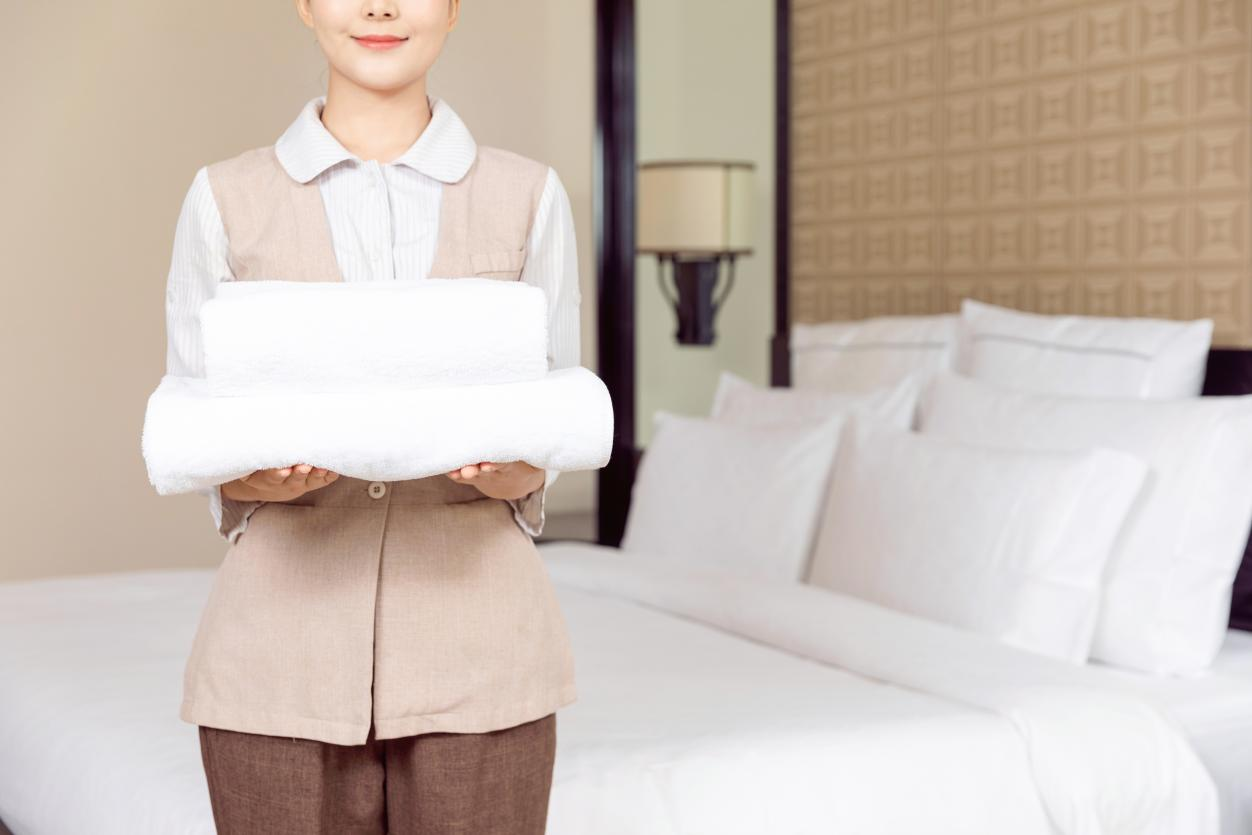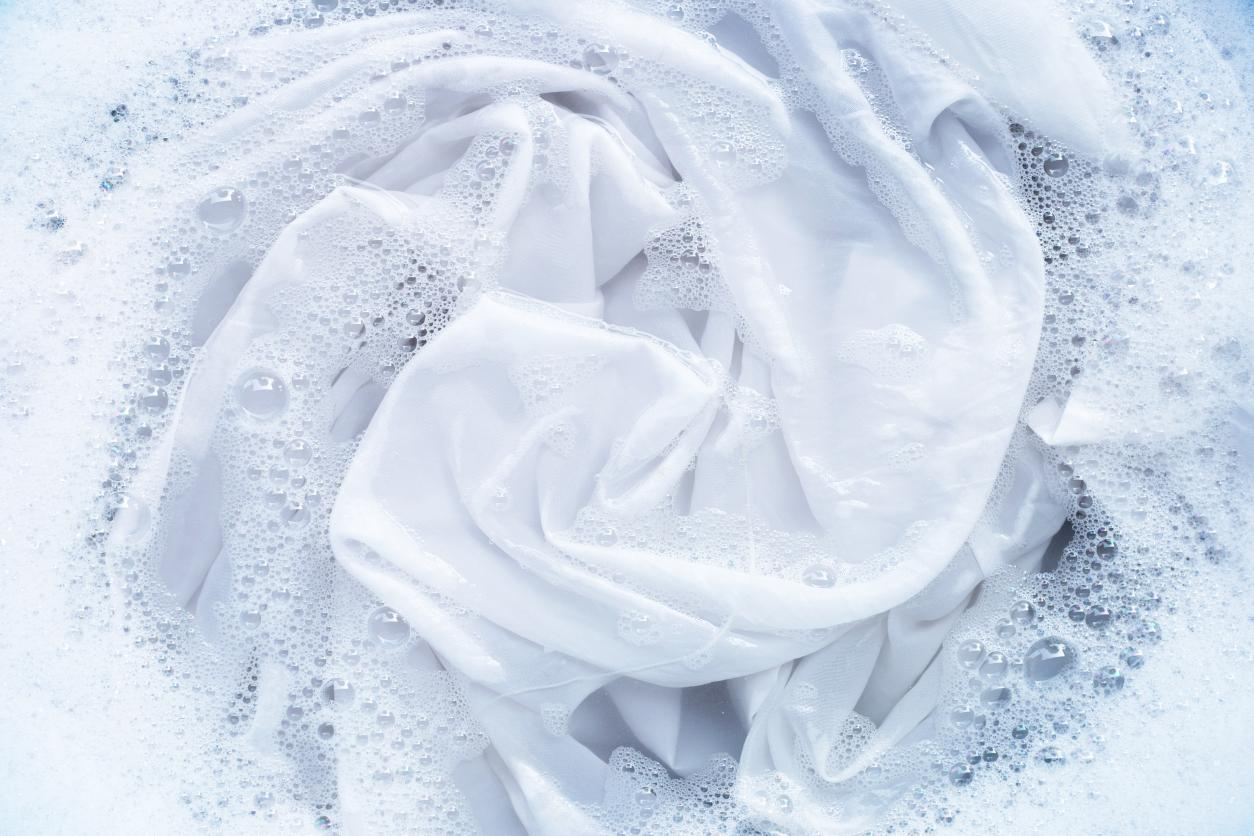In the operation of hotels, the quality of linen is not only related to the comfort of guests but also a key factor for hotels to practice circular economy and achieve green transformation. With the development of technology, present linen remains comfortable and durable and optimizes the shrinkage rate, anti-pilling, strength, color fastness, and other performance indicators. This strongly promotes the “carbon reduction” campaign and becomes an important way of hotel linen circular economy. Then, how do you define the quality of hotel linen? First, we must understand the characteristics of the hotel linen itself. The quality of hotel linen is mainly reflected in the following aspects:
❑ Warp and Weft Density
The warp and weft density is one of the important indicators to measure the quality of linen. The warp line refers to the vertical line in the textile, and the weft line is the horizontal line. It is used to indicate the number of yarns per unit length of fabric and refers to the total number of warp and weft in a unit area. Usually, one square decimeter or one square inch is the unit area. The writing format is warp×weft, for example, 110×90.
● It should be noted that what is marked in the fabric process is the warp and weft density of the greige fabric. The bleaching process will produce a normal variation of 2-5% in the warp and weft density of the fabric. The identification format of the finished product is T200, T250, T300, etc.

❑ Strength of Fabrics
The strength of fabrics can be divided into tear strength and tensile strength. The tear strength reflects the resistance of the damaged part expansion when the fabric is damaged in a small area. The tensile strength refers to the tension that the fabric can withstand in a unit area. The strength of fabrics is mainly related to the quality of cotton yarn quality (single thread strength) and the bleaching process. High-quality linen needs the right strength to ensure durability in daily use.
❑ The Weight of Fabric Per Square Meter
The weight of fabric per square meter can objectively reflect the amount of yarn used in the fabric, that is, the cost. At the same time, it can prevent the use of fine yarn instead of roving yarn. The measurement method is to use a disk sampler to score 100 square centimeters of fabric, and then weigh it and compare the test results to the standard value of the fabric. For example, the standard value of 40S cotton T250 at room temperature is 135g/c㎡.
❑ Shrinkage Rate
Linens of different materials have different shrinkage rates. The shrinkage rate of whole cotton is generally 5% in the warp and weft direction, and the shrinkage rate of polyester cotton is generally 2.5% in the warp and weft direction. Pre-shrunk fabrics can appropriately reduce the shrinkage rate. After pre-shrinkage, the shrinkage rate of the warp and weft yarn of all cotton is 3.5%. Controlling the shrinkage rate is very important for the dimensional stability and long-term use effect of linen.
❑ Skewing Slope
Skewing Slope is calculated by the ratio of weft skew amplitude to the weft of the fabrics, which mainly affects the flatness effect of the product. High-quality linen should minimize the skewing slope phenomenon to ensure the appearance of smooth and beautiful.

❑ Yarn Hairiness
Hairiness is a phenomenon in that too many short fibers cause the fibers to expose the surface of the yarn. According to the fiber length, the cotton can be divided into long-staple cotton (825px), Egyptian cotton, Xinjiang cotton, American cotton, and so on. Too much hair will lead to a high hair removal rate, pilling, and other problems, badly affecting the quality of linen and use experience.
❑ Colorfastness
Colorfastness refers to the resistance of the textile color to various effects during processing and use. In the process of use, textiles will be subjected to light, washing, ironing, sweat, and other external effects. As a result, textiles to be printed and dyed need to have good color fastness. Colorfastness is generally divided into washing fastness, dry cleaning fastness, adhesive fastness (for colored products), and so on. High-quality linen should have good color fastness to ensure lasting bright colors.
CLM Equipment
To promote the hotel linen circular economy, the key is to choose high-quality linen. More than that, intelligent laundry equipment and a good laundry process are needed as well. This can ensure the cleanliness, and flatness of the linen, reduce the damage rate, and prevent towels turn yellow, grey, and smell bad.
In terms of this, CLM laundry equipment is an ideal choice. CLM laundry equipment can provide high-efficiency, high-quality solutions for hotel linens. With high-quality linen, hotels are helped to improve the quality of service and realize the green transformation of the circular economy, contributing to environmental protection and sustainable development.
Let's start with the selection of high-quality linen and advanced laundry equipment to jointly open the green future of the hotel industry.
Post time: Nov-26-2024

